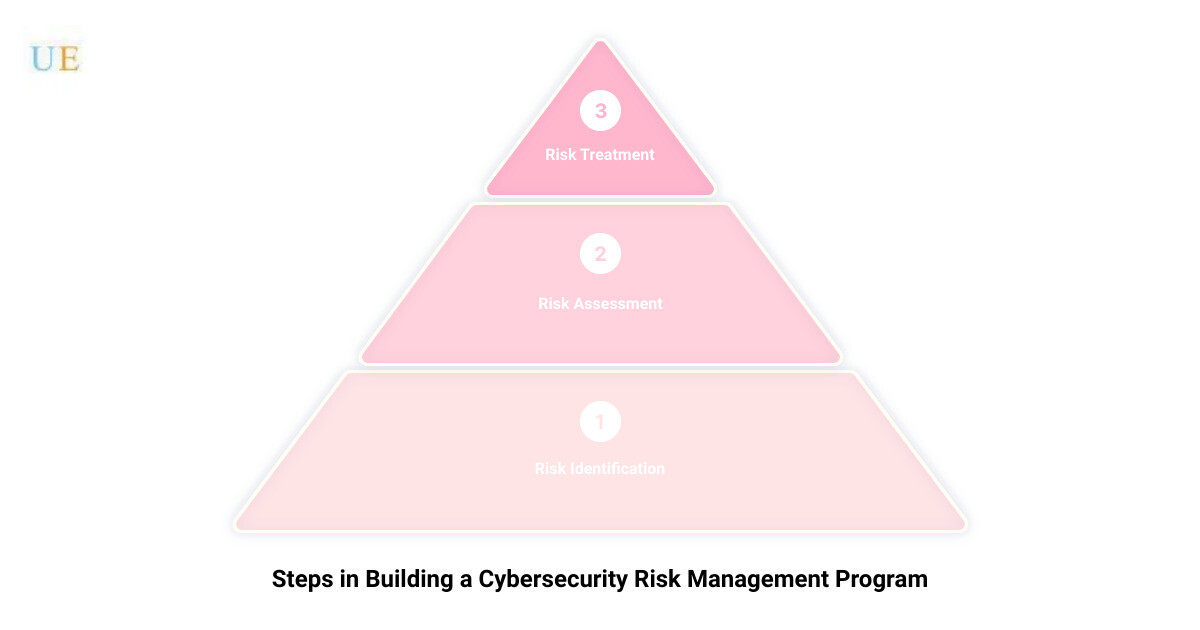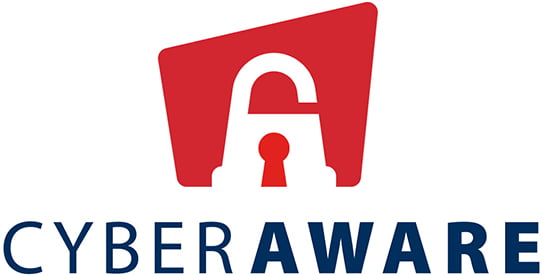Introduction: Understanding Cyber Risk and Its Importance
In the era of digitization, the threat landscape has become as vast as the opportunities. Cyber risk, the likelihood of experiencing disruptions to sensitive data, finances, or business operations online, is no longer a distant possibility but a living reality for many businesses. With the rise of cyber threats such as ransomware, data leaks, phishing, and insider threats, the importance of understanding and managing cyber risks has become a critical aspect of business operations.
As a business owner, you might be wondering, “What is cyber risk and why should I care?” The answer is simple: in today’s interconnected world, your business is only as strong as its weakest link. And often, that weak link is your digital infrastructure. Whether it’s a hacker exploiting a software vulnerability or an employee clicking on a malicious link, cyber threats pose a significant risk to your business’ bottom line and reputation.
That’s where cyber risk assessments come into play. These assessments, recommended by the National Institute of Standards and Technology (NIST), identify, estimate, and prioritize risks to your organization’s operations and assets, resulting from the operation and use of information systems. They are a cornerstone of effective cybersecurity strategies, enabling businesses to measure and mitigate cyber risks proactively.
In this article, we will venture into the core components of cyber risk assessments, providing you with a comprehensive understanding of this critical process. We will also reveal how managed IT service providers like Upper Echelon Technology Group can help your business navigate the complex terrain of cyber risk, offering a personalized approach to IT Managed Services that addresses your unique security needs. By the end of this read, you’ll have a better grasp of the importance of cyber risk assessments in safeguarding your business against digital threats.
The Essence of Cyber Risk Assessments
In the twinkling world of technology, cybersecurity risk assessments are the lighthouse, guiding organizations safely across the stormy seas of digital threats. They are a powerful tool for understanding, managing, and mitigating cyber risks, all crucial steps in creating a robust cybersecurity framework.
The Role of Cyber Risk Assessments in Organizations
At the heart of a cybersecurity risk assessment is the concept of risk management. By identifying potential vulnerabilities and assessing the likelihood and impact of a successful attack, a risk assessment enables businesses to make informed decisions about where to allocate resources for maximum effect.
For businesses like yours in Wilmington, DE, a cybersecurity risk assessment is more than just a box-ticking exercise. It’s a means of exploring where your technology assets may be exposed, and how to best protect them. This process aligns with the philosophy of Upper Echelon Technology Group, where the focus is not just on solving tech issues, but on understanding your business needs and leveraging your technology assets to serve your business better.
The Process of Conducting a Cyber Risk Assessment
Conducting a cybersecurity risk assessment may seem like a daunting task, but broken down into steps, it becomes more manageable. The process begins with identifying and prioritizing your information assets. This could include anything from customer data, to intellectual property, to your IT infrastructure itself.
Once your assets are mapped out, the next step is identifying potential cyber threats and vulnerabilities. This involves keeping abreast of the latest developments in the cyber threat landscape and understanding how these threats could potentially harm your business.
The third step involves analyzing your current controls and deciding whether new ones need to be implemented. This could be anything from updating your antivirus software, to training your staff on new security protocols.
After this, you’ll calculate the likelihood and impact of various scenarios. This will allow you to understand the potential consequences of a cyber attack and place your risks in a broader context.
Finally, you’ll prioritize your risks and document your findings. This will allow you to create an action plan for mitigating your most significant threats.
It’s a rigorous process, but one that is essential in today’s digital world, where cyber threats are constantly evolving. As a cybersecurity-focused managed services provider, Upper Echelon Technology Group can assist you through each step of this process, ensuring that your risk assessment is thorough, up-to-date, and tailored to your business needs.
Key Components of a Cybersecurity Risk Assessment
As we navigate the vast realm of cybersecurity, it’s imperative to understand the key components of a Cybersecurity Risk Assessment. These crucial elements play a significant role in protecting your business from cyber threats and ensuring that you can leverage your technology assets efficiently and safely.
Identifying and Prioritizing Information Assets
The first step towards fortifying your digital fortress is identifying and prioritizing information assets. In this phase, you pinpoint the valuable data that your business relies upon. This could be anything from sensitive customer data to proprietary software systems, and even internal communication platforms. It’s essential to understand what’s at stake if these assets were compromised. Once you’ve identified these assets, prioritize them based on their value to your business operations. This step is vital for effective risk management and resource allocation.
Identifying Cyber Threats and Vulnerabilities
Next, you’ll need to identify potential cyber threats and vulnerabilities. This involves forecasting the possible dangers that could exploit the weaknesses in your IT infrastructure. Cyber threats could range from malware attacks, phishing scams, to data breaches. Simultaneously, vulnerabilities could be outdated software, weak passwords, or even a lack of employee cybersecurity education. Recognizing these threats and vulnerabilities is critical in understanding how your valuable information can be compromised.
Analyzing Controls and Implementing New Ones
With a clear understanding of your information assets, threats, and vulnerabilities, you can now analyze your current security controls. This process involves examining the effectiveness of your current cybersecurity measures and identifying areas for improvement. Are your firewalls robust enough? Do you have adequate data encryption in place? These are the types of questions you need to ask. Once you’ve evaluated your current controls, it’s time to implement new ones where needed. This could be anything from introducing two-factor authentication to implementing stronger data encryption methods.
Calculating the Likelihood and Impact of Various Scenarios
The next step involves calculating the likelihood and impact of various threat scenarios. This process, also known as risk estimation, helps you understand the potential severity of each identified risk. For instance, how likely is it that a specific vulnerability will be exploited? If exploited, what would be the impact on your business? This information can help you make informed decisions about where to focus your resources and efforts.
Prioritizing Risks and Documenting Results
The final step in a Cybersecurity Risk Assessment is prioritizing risks and documenting results. Once you’ve calculated the likelihood and impact of various scenarios, it’s time to prioritize the risks based on their potential damage. Those with the highest potential impact and likelihood should be addressed first. All findings, including identified assets, threats, vulnerabilities, and risk estimations, should be thoroughly documented and communicated to relevant stakeholders. This documentation will form the foundation of your cybersecurity strategy, guiding your efforts to improve your business’s cybersecurity posture.
In summary, a comprehensive Cybersecurity Risk Assessment is an intricate process that involves identifying and prioritizing information assets, identifying threats and vulnerabilities, analyzing and implementing controls, calculating risk, and documenting results. As a cybersecurity-focused managed services provider, Upper Echelon Technology Group is equipped to guide you through this process, ensuring that your business remains robust, secure, and prepared for the ever-evolving digital landscape.
The Role of Automation in Cybersecurity Risk Assessments
In the intricate world of cybersecurity risk assessments, the role of automation cannot be overstated. As we navigate the complex process of identifying threats, analyzing vulnerabilities, and implementing controls, automation emerges as a front-runner in efficient and effective risk management. Let’s delve into the wonders of automation in cybersecurity risk assessments.
The Benefits of Automating the Risk Assessment Process
Automation in cybersecurity risk assessments is like a breath of fresh air in a data-intensive process. It takes the tedious task of manual data compilation and transforms it into a streamlined, error-free operation. It’s as simple as a few clicks to generate comprehensive reports, rather than spending hours sifting through data and formatting spreadsheets.
When we integrate data from multiple sources – think vulnerability scanners, threat intelligence feeds, and other security tools – we gain a holistic view of our security posture. This integration, made possible by automation, permits us to identify potential risks easily and more accurately. So, automation is not just about saving time; it’s about enhancing accuracy and bringing a comprehensive perspective to the table.
How Automation Keeps Up with Changing Security Threats and Compliance Requirements
In the fast-paced world of cybersecurity, staying up-to-date with evolving threats and compliance requirements is a constant challenge. Automation comes to the rescue by offering quick identification of and response to new threats. Keeping up with compliance regulations is also made easier, ensuring that your business meets all relevant guidelines.
Moreover, automation aids in simplifying the risk assessment process. It removes the headache of writing reports once an assessment is complete and streamlines the entire workflow. It’s like having a vigilant, tireless assistant who’s always ready to tackle the next cyber threat.
At the Upper Echelon Technology Group, we recognize the value of automation in cybersecurity risk assessments. We understand the pain points businesses face in managing risk assessments manually. That’s why we offer a solution that eliminates the strain of manual processes, giving you more time to focus on what you do best—running your business.
In a nutshell, automation in cybersecurity risk assessments is a game-changer. It not only improves the efficiency and accuracy of the process but also ensures that your business stays ahead of the curve in the face of evolving cyber threats and compliance regulations.
Building a Cybersecurity Risk Management Program
In today’s digital age, building a robust cybersecurity risk management program is not just an option, but a necessity. Regardless of the size of your business or the industry you operate in, cybersecurity risks pose a real threat that can have devastating consequences if not managed properly. This is why the Upper Echelon Technology Group emphasizes a comprehensive approach to cybersecurity risk management. This involves four key steps: risk identification, risk assessment, risk treatment, and cybersecurity risk reporting.
Risk Identification: The First Step in Risk Management
Risk identification is the first and perhaps the most critical step in risk management. Here, the goal is to identify as many risks to your organization’s information assets as possible. This step involves a thorough evaluation of your data processing environments and the potential threats they face. The outcome of this phase is a risk register, a comprehensive list of potential risks that your organization faces. Remember, risk identification is an iterative process, as new risks will always emerge over time.
Risk Assessment: Evaluating Each Identified Risk
Once the risks have been identified, the next step is risk assessment. This involves evaluating each identified risk in relation to your organization’s environment. Two types of risks are identified during this process: inherent risk (the initial risk before any action is taken) and residual risk (the risk that remains after treatment). Understanding these risks is crucial in determining the most effective treatment strategy.
Risk Treatment: Deciding How to Handle Risks
After evaluating the risks, the next step is risk treatment. In this phase, you’ll create and implement a plan to handle the identified risks. This generally involves one of four strategies: transferring the risk (to an insurance company, for example), avoiding the risk (by not engaging in activities that lead to the risk), accepting the risk (if the cost of mitigation exceeds the potential loss), or mitigating the risk (by implementing controls to minimize its impact). The choice of treatment depends largely on the available resources and the nature of the risks involved.
Cybersecurity Risk Reporting: Keeping Stakeholders Informed
The final step in the cybersecurity risk management process is risk reporting. This involves communicating the results of the risk assessment and treatment to all relevant stakeholders within your organization. Effective risk reporting helps ensure that everyone is on the same page regarding the organization’s risk posture and the measures taken to manage identified risks. This transparency fosters a culture of cybersecurity awareness and helps in making informed business decisions.
In conclusion, building a cybersecurity risk management program is a complex process that requires a systematic approach. By following these steps, you can establish a robust system to identify, assess, treat, and report cyber risks, thereby protecting your organization from potential cyber threats and ensuring its continued growth and success in the digital age.
The Role of Different Cybersecurity Frameworks in Risk Management
In the dynamic realm of cybersecurity, aligning your risk management approach with established regulatory frameworks is key to ensuring comprehensive protection. These frameworks serve as guiding beacons, providing structure and standards to help businesses fortify their digital defenses.
Understanding the Specific Requirements of Different Cybersecurity Frameworks
Different cybersecurity frameworks have specific requirements around risk management. For instance, the NYDFS 23 NYCRR 500 mandates periodic risk assessments. While the GDPR and CCPA may not explicitly require risk assessments, they emphasize the need for considering risks in defining operational activities. The CIS Controls v8, on the other hand, highlights vulnerability management and supplier risk management, even if it doesn’t explicitly state a requirement for risk assessments.
Choosing the right framework for your organization depends on various factors such as the nature of your business, your data processing activities, and the specific cybersecurity threats you face. Whether you opt for NIST CSF, ISO 27001, SOC 2, or another framework, it’s vital to understand the specific requirements and align your risk management practices accordingly.
How Tools Like AuditBoard’s CrossComply Can Help Manage Cybersecurity Risk Assessments
In an era defined by digital transformations, leveraging the right tools can significantly streamline your cybersecurity risk management efforts. CrossComply by AuditBoard is one such tool that is designed to facilitate cybersecurity risk assessments and effectively manage cyber risks in today’s volatile digital landscape.
With CrossComply, you can perform essential tasks such as risk identification, assessment, and treatment. The tool also enables you to comply with common frameworks such as NYDFS 23 NYCRR 500, GDPR, CCPA, and CIS Controls v8. It provides guidance on creating and managing a cybersecurity risk management program, ensuring compliance with the chosen framework.
As a small to medium-sized business owner in Wilmington, DE, you understand that your business needs are unique. By using a tool like CrossComply, you’re not only addressing your tech issues but also making informed decisions based on your cybersecurity risk program. This empowers you to focus on your business, make your team more efficient, and ultimately improve your bottom line.
In conclusion, the role of different cybersecurity frameworks in risk management cannot be overstated. Understanding the requirements of these frameworks and leveraging tools like CrossComply can significantly enhance your cybersecurity posture, thus enabling your business to thrive in today’s digital age.
Conclusion: The Importance of Regular Cybersecurity Risk Assessments in Today’s Digital Age
In a world where cyber threats are evolving at lightning speed, regular cybersecurity risk assessments are no longer a luxury but a necessity. These assessments, as we’ve explored, are instrumental in identifying potential threats, vulnerabilities, and the likely impact on your business operations.
Upper Echelon Technology Group, for instance, has mastered the art of conducting comprehensive risk assessments, ensuring that your technology serves your business instead of the other way around. Their personalized approach to IT Managed Services ensures that your technology issues are resolved, efficiency is enhanced, and your bottom line is improved.
A key takeaway from this discussion is that cybersecurity risk assessments are not static, one-off events. Instead, they’re dynamic processes that require frequent updates to keep pace with the ever-changing threat landscape. The continuous evaluation of your network ensures it remains protected and optimized 24x7x365.
Moreover, the advent of automation has revolutionized the risk assessment process. It not only increases efficiency but also keeps up with changing security threats and compliance requirements.
In essence, regular cybersecurity risk assessments are the backbone of a robust cybersecurity risk management program. They provide a clear picture of your organization’s risk landscape, guide the implementation of effective controls, and support informed decision-making.
Remember, it’s not about eliminating all risks – that’s impossible. It’s about understanding and managing the risks to an acceptable level. As the saying goes, “Knowledge is power.” In the context of cybersecurity, knowledge about your risks gives you the power to protect your assets and ensure the continuity of your business in today’s digital age.
In conclusion, taking cybersecurity lightly could be a costly mistake. It’s only through regular risk assessments that you can stay ahead of the game, safeguard your business, and leverage technology to drive growth. Whether you’re a small business owner in Wilmington, DE, or a multinational corporation, don’t wait until it’s too late. Start your cybersecurity risk assessment today.






